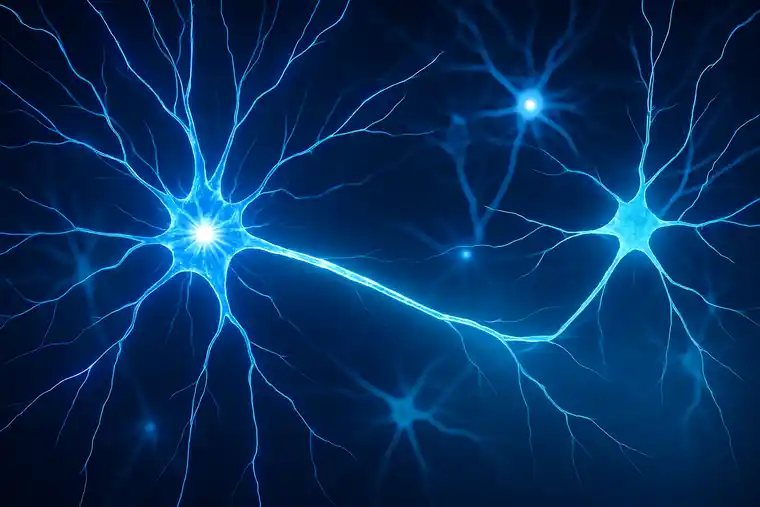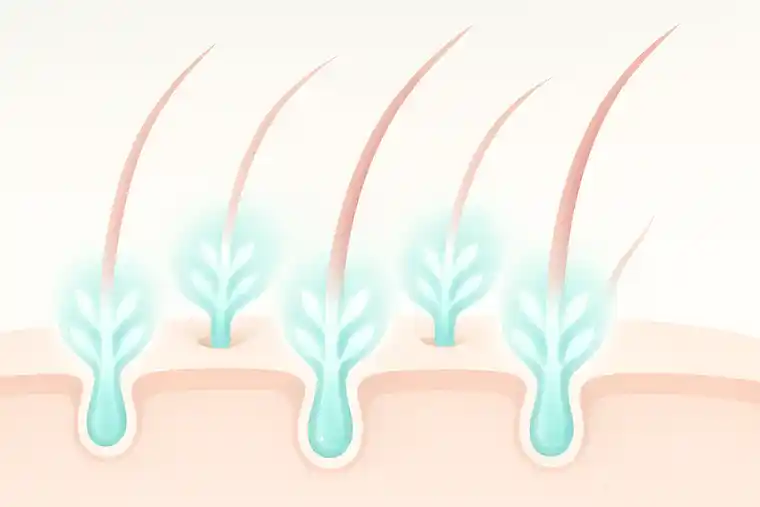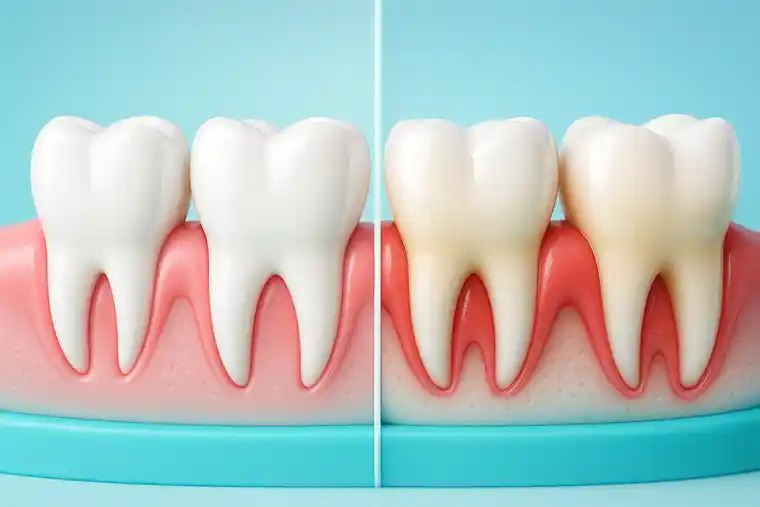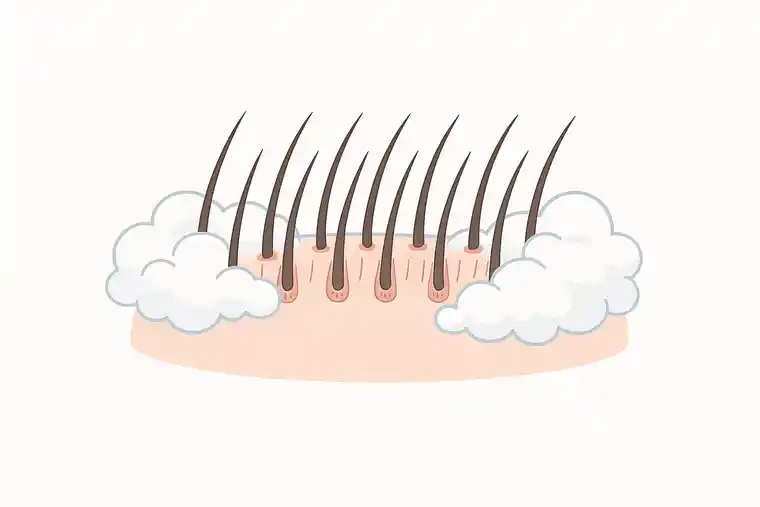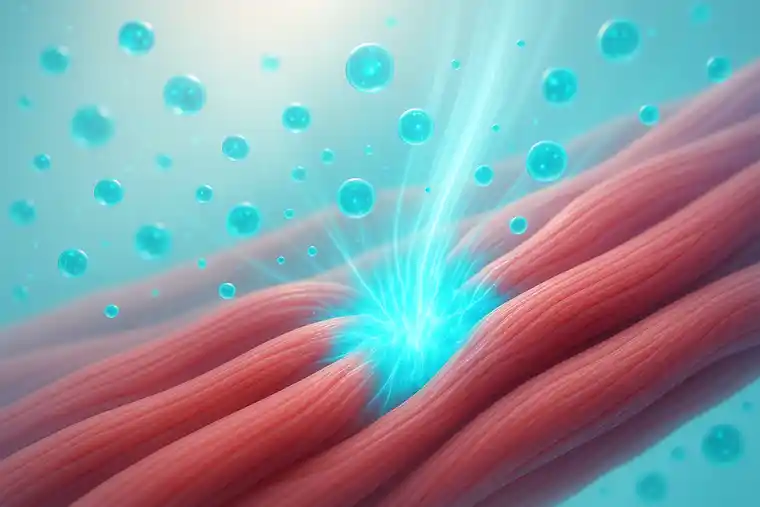Diagnosing Bruxism Through Aesthetic Complaints – Smile Restored in Istanbul, Turkey
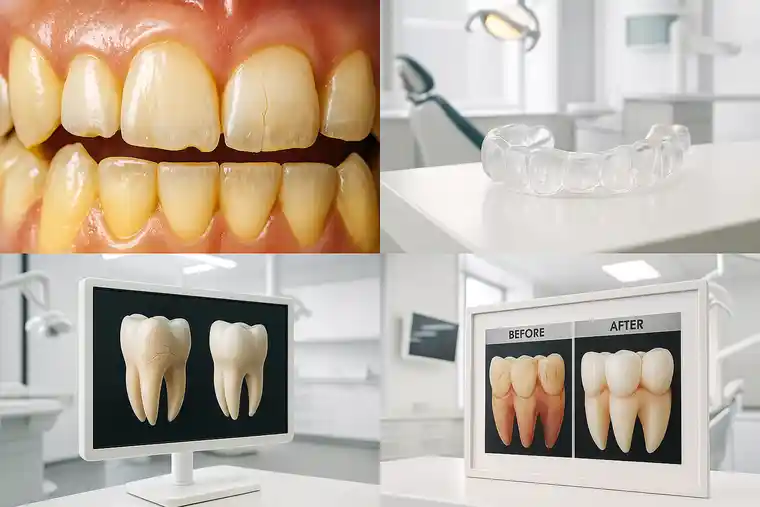
Written by Dr. Madina Gulverdiyeva (DentSpa)
Early Signs of Bruxism and How to Treat Them in Istanbul, Turkey
It usually starts small.
You might see a tiny chip in your front tooth, or notice your smile looks a little uneven in selfies. You could even vaguely feel that your teeth are shorter than they used to be.
But since you’re not in pain, you brush it off. Must’ve been that hard snack you bit into. Or maybe it’s just your teeth aging.
I hate to be the bearer of bad news, but that tiny chip might be your teeth trying to tell you something.
It could be a sign of something known as bruxism. Put simply, it’s when you grind or clench your teeth, sometimes without even knowing it.
And since bruxism is not characterized by pain, at least not at first, most people don’t realize they have it until they notice some aesthetic irregularities on their face.
So let’s talk about what might really be going on behind that worn edge or that flattened tooth.
Table of Contents
What Is Bruxism?
Bruxism is the medical name for teeth grinding. It’s a condition where you grind, clench, or rub your teeth together, sometimes without knowing.
Now, bruxism is more common than you think. About 30% of the world population has some form of bruxism.
Bruxism happens in two ways:
- Awake Bruxism: Also referred to as wakeful or day bruxism, this condition affects people during the day. It usually happens because of stress or anxiety.
- Sleep Bruxism: This kind of bruxism happens when you’re asleep. Usually, this kind of bruxism is the most damaging. This is because, while you sleep, your jaw muscles may clench much more tightly, and you won’t even be aware of it. Depending on the force of the teeth grinding, sleep bruxism may or may not be audible.
Most people with bruxism have no idea they’re doing it until the signs start to show up. And those signs? They usually show up in the mirror before they show up as pain.
What Patients Usually Notice First
Very rarely do patients walk into the dentist’s complaining about grinding their teeth. It starts with something small, like a chipped tooth or a selfie that appears off.
Here are some of the most common early signs of bruxism that people notice:
- Loud Teeth Grinding – Some people do not know they have bruxism until their sleep partner complains. This is because of teeth grinding loud enough to disrupt their sleep.
- Flattened Edges – People with bruxism may notice that their front molars appear worn down. The grinding, which usually follows no pattern, may cause irregularities in their teeth. This causes their teeth to look flat or shiny in places.
- Uneven Smile Line – Additionally, you might observe that some of your teeth seem shorter than others. Your smile may appear uneven or lifeless as a result.
- Rough or Sharp Edges – You may have bruxism if your teeth no longer feel smooth when you run your tongue over them. Additionally, you can see sharp edges or edges that were previously absent.
- Chipped Front Teeth – Due to the excessive grinding, tiny bits of enamel start breaking off. This usually happens at the front and may appear to be a cosmetic issue instead of a warning sign of bruxism.
- Yellowish Tint – The breaking and wearing off of the enamel exposes the dentin layer inside the teeth. This causes your teeth to appear yellowish.
Sometimes a friend or loved one will point it out first. Sometimes it shows in photos. But either way, most people notice the cosmetic effects first, because that’s what stands out.
But cosmetic changes are usually just the first clue.
In her experience with patients at DentSpa, Dr. Madina Gulverdiyeva, a DentSpa Prosthodontic Specialist with over 15 years of experience, explains:
“People often come in thinking they’ve just chipped a tooth by accident. But when I look closer, I can see patterns of wear that often suggest that someone’s been grinding their teeth. It’s usually not just one chip. It’s ongoing damage from grinding they didn’t know was happening.”
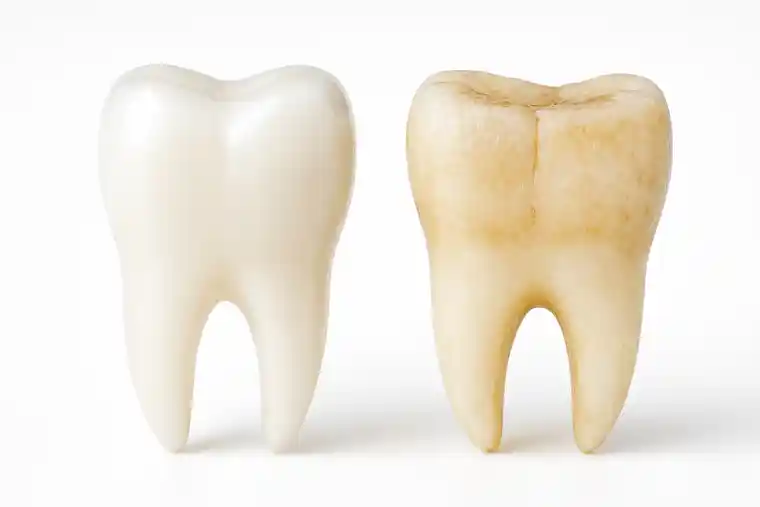
What’s Really Happening in Bruxism That You Don’t See
- If you chip a tooth, what would you say caused it?
- Most times, the answer is pressure. And a lot of it.
- When you grind your teeth, especially at night, your jaw muscles can produce a lot of force. This is more force than they ever use for chewing. This puts a lot of strain on your jaw muscles and joints.
- The frightening part? You don’t feel or notice it because you’re asleep.
Over time, your teeth’s protective enamel layer is eroded by this grinding and clenching. The result is that your teeth get:
- Weaker
- More sensitive
- Easier to chip
So, while that chipped edge might seem random, it could be the result of months — or even years — of silent grinding.
According to Dr. Madina Gulverdiyeva:
“Night grinding doesn’t cause pain in the beginning, so people assume everything’s fine. But I’ve seen patients with serious enamel loss who had no idea they were grinding until they cracked a tooth or their teeth started shifting.”
Other Signs of Bruxism You Might Be Ignoring
Bruxism doesn’t just affect your teeth. It can affect your whole head and neck area. The tricky part? These symptoms often don’t feel like a “tooth problem.” So people ignore them or blame something else.
Here are some signs to watch for:
- Morning Headaches – You wake up with a dull ache at your temples or the back of your head. Could be stress, right? Sure. But it could also be your jaw clenching all night.
- Tooth Sensitivity – You should look for additional symptoms of bruxism if your teeth start to hurt when you drink something sweet or cold. This is because grinding wears down the enamel that covers your teeth, exposing the sensitive interior.
- Ear or Neck Pain – The jaw connects to a lot of other parts of your face, shoulder, and neck. So pain can spread. It could feel like a stiff neck, ringing in the ears, or even an earache.
- Clicking or Popping Sounds – You may be experiencing symptoms of bruxism if you hear popping or clicking sounds when you open or close your mouth. This is due to the fact that excessive teeth grinding can strain your jaw joints.
Other probable signs to watch out for include:
- Face tension or a tired feeling in your jaw
- Sleep problems
- Tight or sore jaw muscles, especially after waking up
- Jaw muscles are getting larger than expected
Any of those feel familiar?
A lot of people live with these symptoms for years. They think it’s stress, bad posture, or just the result of them sleeping funny. But in many cases, the actual cause is hiding in your mouth.
And if those symptoms show up alongside cosmetic changes in your teeth, it’s a big clue that grinding might be the real culprit.
How Dentists Spot Bruxism
Dentists are trained to read between the lines. Even if you don’t notice any pain, your dentist might already see signs of bruxism. That’s because grinding leaves clues. Subtle ones, but clues nonetheless.
Here’s what happens when you go in for a checkup:
- They examine your teeth – Grinding is indicated by flattened biting surfaces, glossy enamel, tiny cracks, or strange wear patterns.
- They check your jaw muscles – Those muscles may have been overworked at night if they feel sore or heavy.
- They study your bite – It matters how your teeth fit together. Uneven pressure may be created if certain areas touch more than others.
- They ask necessary questions – These questions could be anywhere from “Have you been experiencing headaches when you wake up?” to “Have you been observed grinding at night?” Your responses aid in completing the gaps and determining if you really have bruxism.
- They might use digital tools – To see minute details that are invisible to the human eye, some clinics employ 3D scans or other sophisticated imaging techniques. These instruments assist in identifying grinding damage before it becomes troublesome.
The goal isn’t just to spot damage. It’s to understand the pattern behind it, so they can stop the problem before it gets worse.
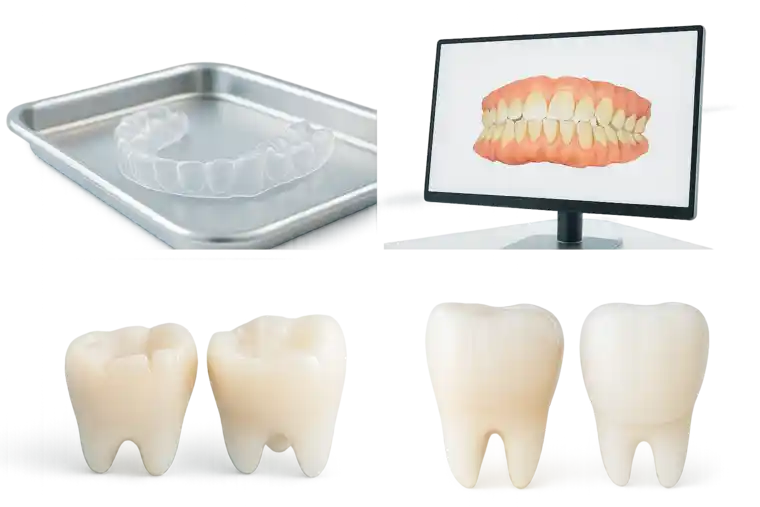
What Bruxism Treatment Looks Like
So you’ve been diagnosed with bruxism. Now what?
A lot of people want to jump straight to cosmetic fixes. While this is possible, fixing the tooth without stopping the grinding is not the best approach. This is because the new bonding or veneer won’t last. Eventually, you’d be right back in the same spot later.
Dr. Madina puts it simply:
“Imagine repainting a wall that keeps getting scratched. You have to stop the scratching first. That’s why we never jump straight to cosmetic repairs until the grinding is under control.”
So here’s how dentists do it properly. The first step is protecting your teeth from more damage. After that, you can work on fixing how they look.
Here’s how they treat Bruxism
- Night Guards – You wear these custom-made mouthpieces at night. They prevent you from grinding enamel on enamel by forming a gentle barrier between your upper and lower teeth.
- Bite Correction – Even minor adjustments can help distribute the pressure more evenly if your teeth are not in alignment.
- Relaxation or Habit Therapy – Particularly for those who clench during the day, stress-reduction methods, jaw stretches, or even mindfulness can be quite helpful.
- Cosmetic Corrections – Finally, after the grinding has stopped, you can then talk about veneers, crowns, or bonding as options for your smile’s restoration once the grinding has stopped. This only works, though, if the root cause is fixed first.
But the key is timing. You don’t just cover the damage. You stop it from happening again.
When Should You Get Help for Bruxism?
If you’re reading this and thinking, “Wait… I’ve got some of those signs,” then now is a good time to check in with a dentist.
Here’s when to make that call:
- You notice new chips or cracks
- Your teeth look shorter or more uneven
- You’re waking up with tightness or pain in your jaw
- You’ve had headaches in the morning and don’t know why
- Someone has told you they hear you grinding at night
Even if you’re not sure, it never hurts to ask. A quick check could save you years of damage.
How to Get the Best Care If You Think You Have Bruxism
If you’re noticing small changes in your smile, don’t ignore them even if they seem minor. Your teeth might be trying to tell you that something’s going on. And the sooner you get a diagnosis, the easier it is to treat.
Now, if you’re wondering where to go for help, Turkey should definitely be on your radar. The country is one of the best places to get your bruxism diagnosed, fixed, and get your smile right again.
It is renowned for providing top-notch dental care, particularly in the areas of restorative and cosmetic procedures. You’ll find clinics equipped with modern tech, skilled dentists, and prices that are way more affordable than what you’d pay in many Western countries.
But with so many options, how do you know which clinic is the right one for you?
DentSpa in Istanbul makes that choice easy. Voted Europe’s best dental clinic, DentSpa has been helping people protect and restore their smiles for over 25 years.
They’re not just focused on making teeth look good. They’re all about long-term care, stopping the grinding, fixing the damage, and making sure your smile stays strong and healthy for years to come.
Book a consultation with DentSpa today.
For those who are inspired by this MedClinics blog, remember that your path to a new smile is just a phone call away. Anyone interested in finding out more should contact MedClinics. There you will be in the best hands.
Get a free consultation and a no-obligation quote now!
Stay Updated
Follow our blog for the latest in medical and aesthetic treatments, tips for maintaining healthy teeth, and inspiring patient success stories.
Get your free consultation
- Need guidance and reassurance?
- Talk to a real person from MedClinics!
- Let's find the perfect doctor together.
